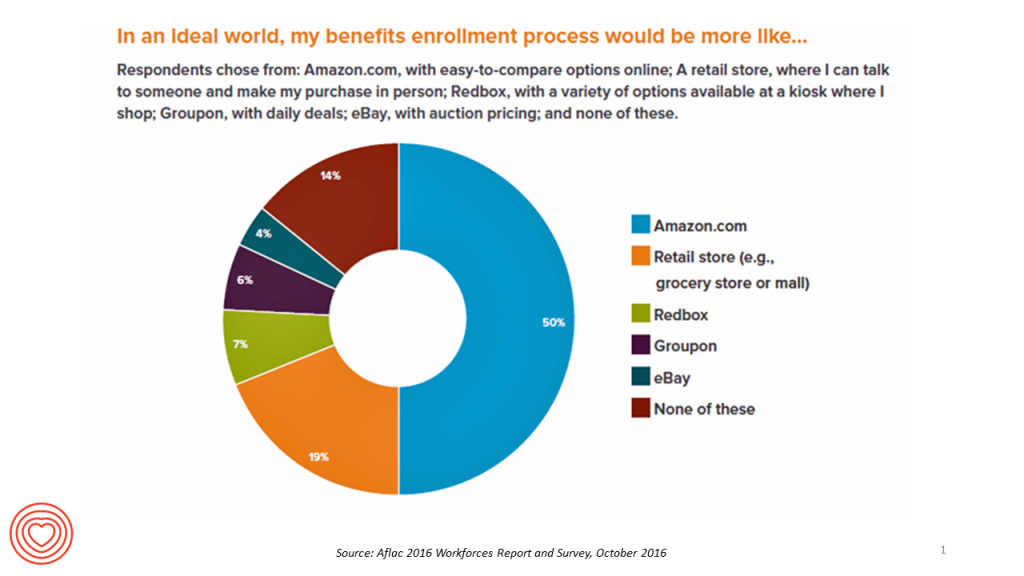What did you think of the State of the Union address? I won’t get into all the policies and positions put forth by President Trump, but I will review his statements related to health care.
And we are serving our brave veterans, including giving our veterans choice in their healthcare decisions. Last year, the Congress passed, and I signed, the landmark VA Accountability Act. Since its passage, my Administration has already removed more than 1,500 VA employees who failed to give our veterans the care they deserve — and we are hiring talented people who love our vets as much as we do.
I will not stop until our veterans are properly taken care of, which has been my promise to them from the very beginning of this great journey.
The VA Accountability First Act of 2017 provides the government with “the authority to expeditiously remove, demote, or suspend any VA employee, including Senior Executive Service (SES) employees, for performance or misconduct”. It would also increase rewards for whistleblowers and increase the financial penalties for employees due to misconduct, poor performance or even committing a penalty.
Was the law effective? The Washington Post states that the 1,500 firings is “inaccurate”. They write: “It’s true that more than 1,500 firings at the VA have occurred so far during the Trump administration. But more than 500 of those firings occurred from Jan. 20, when Trump took office, to late June, when the new accountability law began to take effect. That means roughly one-third of the 1,500 firings cannot be attributed to the new law.
To speed access to breakthrough cures and affordable generic drugs, last year the FDA approved more new and generic drugs and medical devices than ever before in our history.
This is true. As NPR’s Alison Kodjak writes in their fact check: “The FDA approved 56 new drugs last year and 1,027 generics, a record in both categories. FDA Commissioner Scott Gottlieb says the agency is on track to approve even more drugs this year.” The focus on expedited review times is real. However, the drug development process takes years or even decades, so clearly changes in government policies this year–while having the potential to change approval rates–will have little effect on current innovation, but could incentivize additional investments which would lead to future innovation.
We also believe that patients with terminal conditions should have access to experimental treatments that could potentially save their lives. People who are terminally ill should not have to go from country to country to seek a cure — I want to give them a chance right here at home. It is time for the Congress to give these wonderful Americans the “right to try.”
As the Hill reports, “Last year, the Senate passed the bill, known as “right to try,” by unanimous consent, and groups backed by billionaire conservative donors Charles and David Koch are pushing the House to do the same. ” Right now, the bill is before the House to come up for a vote.
Even if the legislation passes, this may not be as revolutionary change as some might believe. As reported in STAT, “More than 30 states already have laws that allow some patients access to experimental treatments, and the FDA itself already has a pathway for granting expedited access to treatment to patients with terminal illness.”
These reforms will also support our response to the terrible crisis of opioid and drug addiction. In 2016, we lost 64,000 Americans to drug overdoses: 174 deaths per day. Seven per hour. We must get much tougher on drug dealers and pushers if we are going to succeed in stopping this scourge. My Administration is committed to fighting the drug epidemic and helping get treatment for those in need. The struggle will be long and difficult — but, as Americans always do, we will prevail.
The increase of opioid overdoses and deaths in the U.S. has been astounding over the past 20 years. It is a problem that needs to be addressed. Trump framed the issue of one of increased law enforcement rather than an issue to be addressed by the medical community. Most experts argue that drug addiction is a demand-side problem, and improved treatment and support typically work better than additional law enforcement.
We eliminated an especially cruel tax that fell mostly on Americans making less than $50,000 a year — forcing them to pay tremendous penalties simply because they could not afford government-ordered health plans. We repealed the core of disastrous Obamacare — the individual mandate is now gone.
This is the repeal of the individual mandate. Generally, the individual mandate was not popular; people don’t like being forced to do something. Additionally, the cost of this insurance–even for many with subsidies was burdensome.
Without the individual mandate, however, healthy people generally leave the insurance pool driving up rates for those who are remaining. There is a risk of an adverse selection death spiral, where rates would continue to rise.
The CBO estimates that repealing the individual mandate “would reduce federal deficits by about $338 billion over the 2018–2027 period and increase the number of uninsured people by 4 million in 2019 and 13 million in 2027.”
The point came as House and Senate Republicans mull passage of a bill to fund cost-sharing reduction payments and a reinsurance pool to try to stem premiums for unsubsidized enrollees in the exchanges next year.
One of my greatest priorities is to reduce the price of prescription drugs. In many other countries, these drugs cost far less than what we pay in the United States. That is why I have directed my Administration to make fixing the injustice of high drug prices one of our top priorities. Prices will come down.
This was one of President Trump’s campaign promises. Vox notes that to date, however, bringing down prescription drug prices has not been a priority–although that of course could change.
However, it is not clear how exactly this promise would be implemented. Would the government negotiate with pharmaceutical firms directly? HuffPost is skeptical that this would occur since “Republicans want nothing to do with that. (Plenty of Democrats don’t either, by the way.)”
There is general skepticism about the implementation. As reported at AJMC, “There’s certainly been a gap between rhetoric and reality,” said John Rother, president and CEO of the National Coalition on Health Care (NCHC).
One potential way to reduce costs is to facilitate generic drugs coming onto the market after patent expiration. New HHS Secretary Alex Azar seems to be in favor of this approach.
Pharmaceutical firms responded that despite the high sticker price, many drugs provide great value. Eli Lilly CEO Dave Ricks disagreed with President Trump and said that prescription drugs, “they remain the best deal going in health care.” PhRMA has a “Let’s Talk about Cost” campaign to bring some transparency to why prescription drug prices are so high.
Another question is what the President means by “prices”. Are these the prices that health plans pay? Or is this the out-of-pocket cost that insured patients must bear? Both have been increasing, but with the share of people insured through high-deductible plans rising (28% of those on employer plans as of 2017), patients are no longer insulated from changing drug prices.
2018 State of the Union: Healthcare Recap posted first on http://dentistfortworth.blogspot.com
 The fact that the average U.S. employer committed to spend nearly $27,000 a year for a PPO to cover a family of 4 in America in 2017 is the most important rationale underlying
The fact that the average U.S. employer committed to spend nearly $27,000 a year for a PPO to cover a family of 4 in America in 2017 is the most important rationale underlying  That news immediately shook Wall Street trading, sending downward shocks down the proverbial spines of healthcare insurance plans and suppliers to the industry — legacy healthcare companies that scale patient-members and healthcare supplies, like pills and surgical implants.
That news immediately shook Wall Street trading, sending downward shocks down the proverbial spines of healthcare insurance plans and suppliers to the industry — legacy healthcare companies that scale patient-members and healthcare supplies, like pills and surgical implants. Remember:
Remember:  Trust in the United States has declined to its lowest level since the Edelman Trust Barometer has conducted its annual survey among U.S. adults. Welcome to
Trust in the United States has declined to its lowest level since the Edelman Trust Barometer has conducted its annual survey among U.S. adults. Welcome to  Government had the steepest decline (14 points) among the general population. Fewer than one in three believe that government officials are credible.
Government had the steepest decline (14 points) among the general population. Fewer than one in three believe that government officials are credible. By persona, who do we trust? Not our peers or people-like-us, as much as we used to. This year, we most trust technical and academic experts as the most credible spokespeople. “Credentialed sources are proving more important than ever,” Edelman found.
By persona, who do we trust? Not our peers or people-like-us, as much as we used to. This year, we most trust technical and academic experts as the most credible spokespeople. “Credentialed sources are proving more important than ever,” Edelman found. Every year here on Health Populi, I assess the Edelman Trust Barometer’s health and health care implications.
Every year here on Health Populi, I assess the Edelman Trust Barometer’s health and health care implications.  Technology is the most-trusted sector in 2018 — and healthcare has much to gain by modernizing the sector, going beyond the EHR implementations that have slowed down and physician productivity and
Technology is the most-trusted sector in 2018 — and healthcare has much to gain by modernizing the sector, going beyond the EHR implementations that have slowed down and physician productivity and 

 Health Populi’s Hot Points: Spending more, and getting less is my top-line finding from this report. Out-of-pocket (OOP) spending per covered employee increased between 2012 and 2016, but peoples’ utilization of health care services fell.
Health Populi’s Hot Points: Spending more, and getting less is my top-line finding from this report. Out-of-pocket (OOP) spending per covered employee increased between 2012 and 2016, but peoples’ utilization of health care services fell. The second (blue) chart, from the report, shows that a patient’s personal cash-flow is a driver of out-of-pocket healthcare spending — in this case, the cash infusion of a tax refund, triggering OOP spending: consumers immediately increased their OOP spending by 60% in the week they received a tax refund, and then 20% more over the 75 days following the tax refund.
The second (blue) chart, from the report, shows that a patient’s personal cash-flow is a driver of out-of-pocket healthcare spending — in this case, the cash infusion of a tax refund, triggering OOP spending: consumers immediately increased their OOP spending by 60% in the week they received a tax refund, and then 20% more over the 75 days following the tax refund. The first use case for which the two companies will collaborate will leverage
The first use case for which the two companies will collaborate will leverage  While consumers, especially younger ones (THINK: first-time parents), are increasingly demanding more accessible, convenient, lower-cost channels for health care, providers are also organizing to adopt telehealth.
While consumers, especially younger ones (THINK: first-time parents), are increasingly demanding more accessible, convenient, lower-cost channels for health care, providers are also organizing to adopt telehealth.  Health Populi’s Hot Points: Seven in 10 health systems not currently receiving reimbursement for virtual care expect to receive payment in 2018, according to the
Health Populi’s Hot Points: Seven in 10 health systems not currently receiving reimbursement for virtual care expect to receive payment in 2018, according to the 